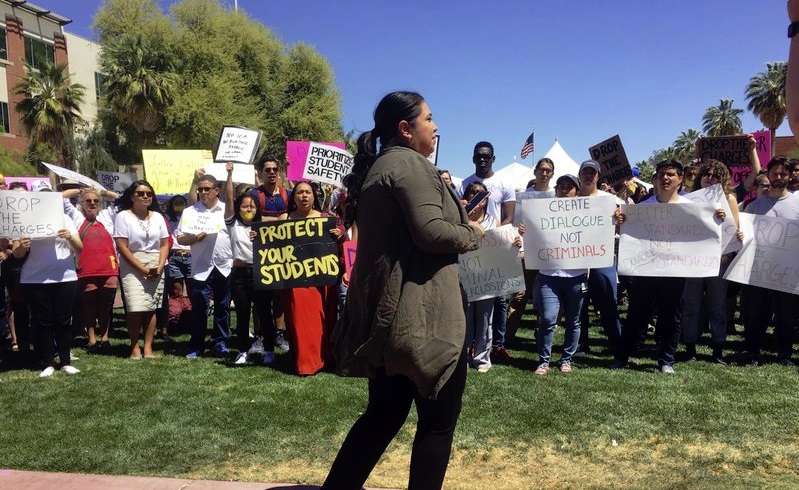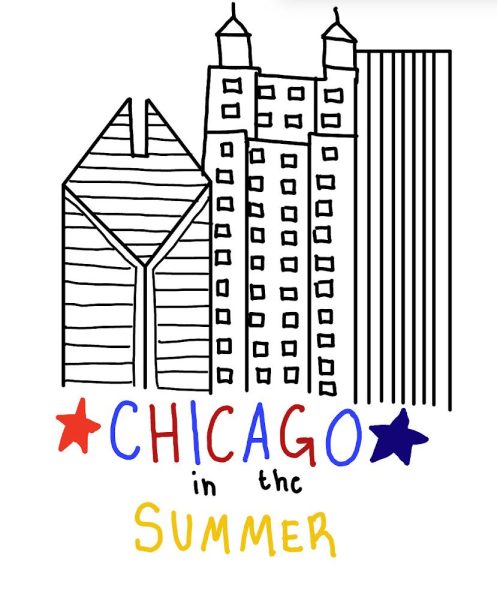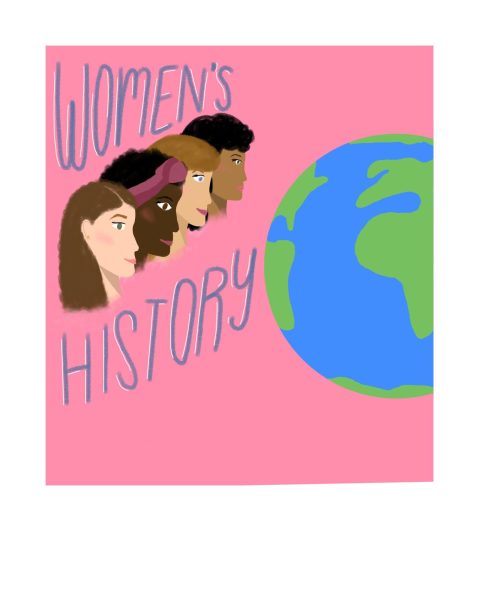Arrests at University of Arizona Reignite Debate Over Free Speech On College Campuses
Photo Courtesy of @NewsWorldToday on Twitter
Univeristy of Arizona students protest the arrests of three of their peers.
By Margaret Kassay
Public backlash has grown towards the United States Border Patrol in recent months as issues over migration at the U.S.-Mexico border—like the death of two Guatemalan children in ICE custody—slowly continue. Only sixty miles north of the border is the University of Arizona (UA), where the rocky public relations of Border Patrol combined with the issue of free speech on college campuses has resulted in a political charged clash between UA students and Border Patrol Agents, both of whom believe their rights have been violated. On March 19th, 2019, several officers from the United States Border Patrol were invited to give a presentation to students at the University of Arizona, as part of the school’s career day events.
During their presentation, a group of students gathered outside to protest, filming the officers and chanting for them to leave. After the presentation, as the officers attempted to leave peacefully, three women from the crowd followed them to their cars while yelling insults and threats. The three students were apprehended by UA security officers and were reported to the authorities. Two were charged with disturbing the peace and the third woman was accused of threatening and intimidating. The authorities have since dropped all charges against the students in response to a UA investigation into the incident. The incident has sparked controversy on campus, with one side celebrating the students’ right to free speech while the other accuses the students of committing a crime by threatening law enforcement officers.
In general, it was politically left-leaning students who were eager to defend the protestors’ rights to free speech. These students conducted protests on campus to voice their anger with the University for handing over its students and attempting to stifle a peaceful protests. University of Arizona’s more conservative students were also angered by the situation. They countered that the student protests of the Border Patrol presentation were an attempt to deny the Border Patrol agents their rights to free speech.
In addition, some conservatives on campus accused the prosecutors in charge of the case of caving into public pressure when they dropped charges against the three students who followed the border patrol agents. The University of Arizona’s situation is not isolated. College campuses across the country struggle with the issue of freedom of speech. Campuses encourage students to be open to new experiences and do their best to introduce new ideas or viewpoints through a variety of presentations, speakers, and forums. However, free speech can become a point of contention on campuses when some students believe it is being used as a cover for hate speech or harassment.
A prime example of this slippery slope is the Unite the Right Rally in Charlottesville, Virginia. Richard Spencer, a neo-nazi and white supremacist, incited protests and counter-protests when he spoke at the University of Virginia in 2016. At the time, UVA believed they could expose their students to differing viewpoints by letting Spencer speak. This kicked off the protests that ended with a Spencer supporter driving his car into a crowd of counter-protesters, killing one. At the time of the UVA protests, it was largely liberals arguing that free speech on college campuses had gone too far and crossed into hate speech.
Now, at the University of Arizona, it is mostly those on the other end of the political spectrum arguing that the three students who followed the Border Patrol officers went too far and are not protected by freedom of speech. These two incidents elucidate the tough position colleges and universities find themselves in. On one hand, hate speech is intolerable but on the other free speech is a constitutional amendment. The line between these two is very thin and often blurry, and schools find themselves struggling to find speakers who can please both side of the political spectrum.
The University of Arizona is now attempting to answer the questions that so many colleges continue to struggle with: how can a school remain open-minded amidst political divisiveness, how far should schools go to protect freedom of speech, and where is that thin line between free speech and hate speech?





